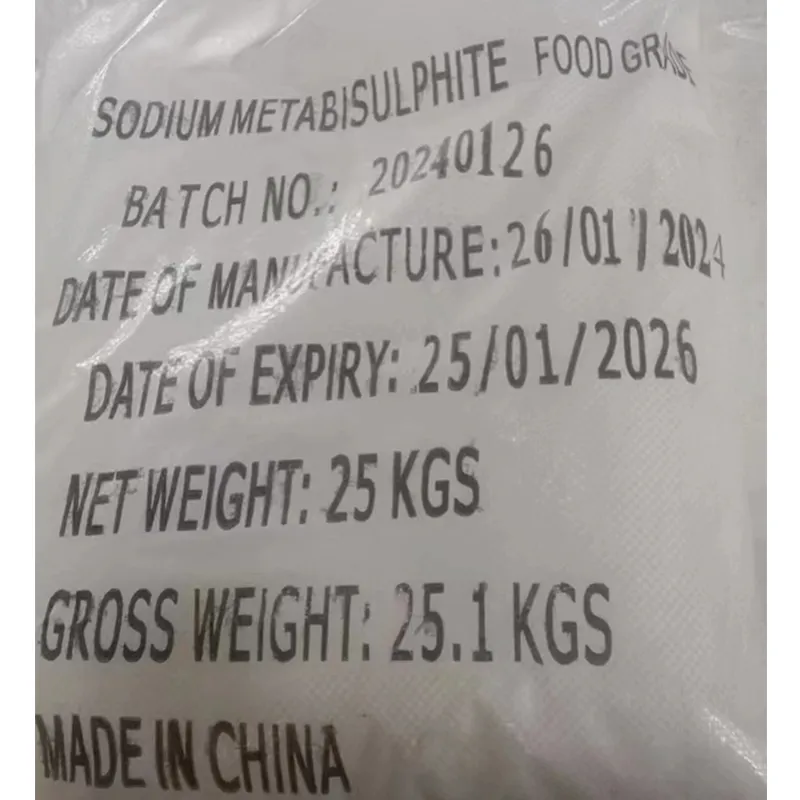
dimethyl disulfide
Understanding Dimethyl Disulfide Properties, Uses, and Safety Concerns
Dimethyl disulfide (DMDS) is an organosulfur compound with the chemical formula C2H6S2. It consists of two methyl groups attached to a disulfide bond, which results in a distinct molecular structure that gives DMDS its unique properties. This compound is widely recognized for its application in various industrial processes, agriculture, and even in flavoring.
Chemical Properties
Dimethyl disulfide is a colorless liquid under standard conditions, exhibiting a strong and unpleasant odor often reminiscent of rotten cabbage or garlic. Its low boiling point, approximately 100 °C (212 °F), and moderate solubility in water make it a volatile substance. Due to its chemical structure, DMDS is a reactive compound, susceptible to oxidation and hydrolysis. These properties play a crucial role in its applications, particularly in agriculture and the production of sulfur-containing compounds.
Industrial Uses
One of the primary uses of DMDS is as a methylating agent in organic synthesis. The compound can introduce sulfur into organic molecules, making it valuable in the production of chemicals such as thiols, sulfides, and sulfoxides. Furthermore, DMDS acts as an effective reagent in the oil and gas industry, where it is utilized for its ability to enhance natural gas recovery and as a sulfur source in the development of catalysts.
In agriculture, dimethyl disulfide is recognized for its effectiveness as a soil fumigant, helping control pests, diseases, and weed seeds in soil
. Its application is particularly beneficial in crop production, where it promotes healthier soil conditions and optimizes plant growth. DMDS is often seen as an alternative to methyl bromide, a soil fumigant that has been phased out due to its ozone-depleting properties.Regulatory Aspects
dimethyl disulfide

While dimethyl disulfide has various industrial and agricultural applications, it is also subject to regulatory scrutiny. Authorities like the Environmental Protection Agency (EPA) in the United States have established guidelines for its use, recognizing both its benefits and potential risks. When applied correctly, DMDS can provide effective pest control without significantly harming the environment; however, improper usage can lead to harmful implications on human health and ecological balance.
Safety and Health Considerations
DMDS is categorized as hazardous, primarily due to its irritating effects on the eyes, skin, and respiratory tract. Exposure to the compound can induce symptoms such as coughing, sneezing, and breathing difficulties, emphasizing the importance of protective measures during handling. Safety guidelines dictate wearing appropriate personal protective equipment (PPE), including gloves, goggles, and masks, to mitigate risks associated with exposure.
In addition to workplace safety, there are environmental considerations tied to DMDS usage. As a volatile organic compound (VOC), excessive release into the atmosphere can contribute to air pollution and potentially lead to adverse health effects in nearby populations. Therefore, proper management and adherence to regulatory frameworks are essential to minimize environmental impact.
Conclusion
Dimethyl disulfide stands out as a versatile compound integral to various industries, particularly in agriculture and organic synthesis. While it provides significant benefits, it is crucial to approach its usage with caution, adhering to safety protocols and environmental regulations. Ongoing research into the environmental impact and potential alternatives will further refine the role of DMDS in sustainable practices.
Understanding the balance between leveraging the advantages of dimethyl disulfide and managing its risks is essential for both industry professionals and regulatory bodies. By fostering responsible use, we can harness the benefits of this compound while ensuring a safe and healthy environment for all.
-
The Safety Challenges of Ammonium Nitrate FertilizerNewsJun.26,2025
-
The Critical Role of Mining ChemicalsNewsJun.26,2025
-
Shelf Life of Glacial Acetic Acid Food GradeNewsJun.26,2025
-
Enhancing PVC Longevity with 1,2,3-Benzotriazole InnovationsNewsJun.26,2025
-
China’s Dominance in Food Additive ProductionNewsJun.26,2025
-
Can Aluminum Hydroxide Replace More Toxic Alternatives?NewsJun.26,2025
-
PE and PP Plastics with Benzotriazole AdditivesNewsJun.12,2025
Hebei Tenger Chemical Technology Co., Ltd. focuses on the chemical industry and is committed to the export service of chemical raw materials.
-

view more DiethanolisopropanolamineIn the ever-growing field of chemical solutions, diethanolisopropanolamine (DEIPA) stands out as a versatile and important compound. Due to its unique chemical structure and properties, DEIPA is of interest to various industries including construction, personal care, and agriculture. -

view more TriisopropanolamineTriisopropanolamine (TIPA) alkanol amine substance, is a kind of alcohol amine compound with amino and alcohol hydroxyl, and because of its molecules contains both amino and hydroxyl. -

view more Tetramethyl Thiuram DisulfideTetramethyl thiuram disulfide, also known as TMTD, is a white to light-yellow powder with a distinct sulfur-like odor. It is soluble in organic solvents such as benzene, acetone, and ethyl acetate, making it highly versatile for use in different formulations. TMTD is known for its excellent vulcanization acceleration properties, which makes it a key ingredient in the production of rubber products. Additionally, it acts as an effective fungicide and bactericide, making it valuable in agricultural applications. Its high purity and stability ensure consistent performance, making it a preferred choice for manufacturers across various industries.











